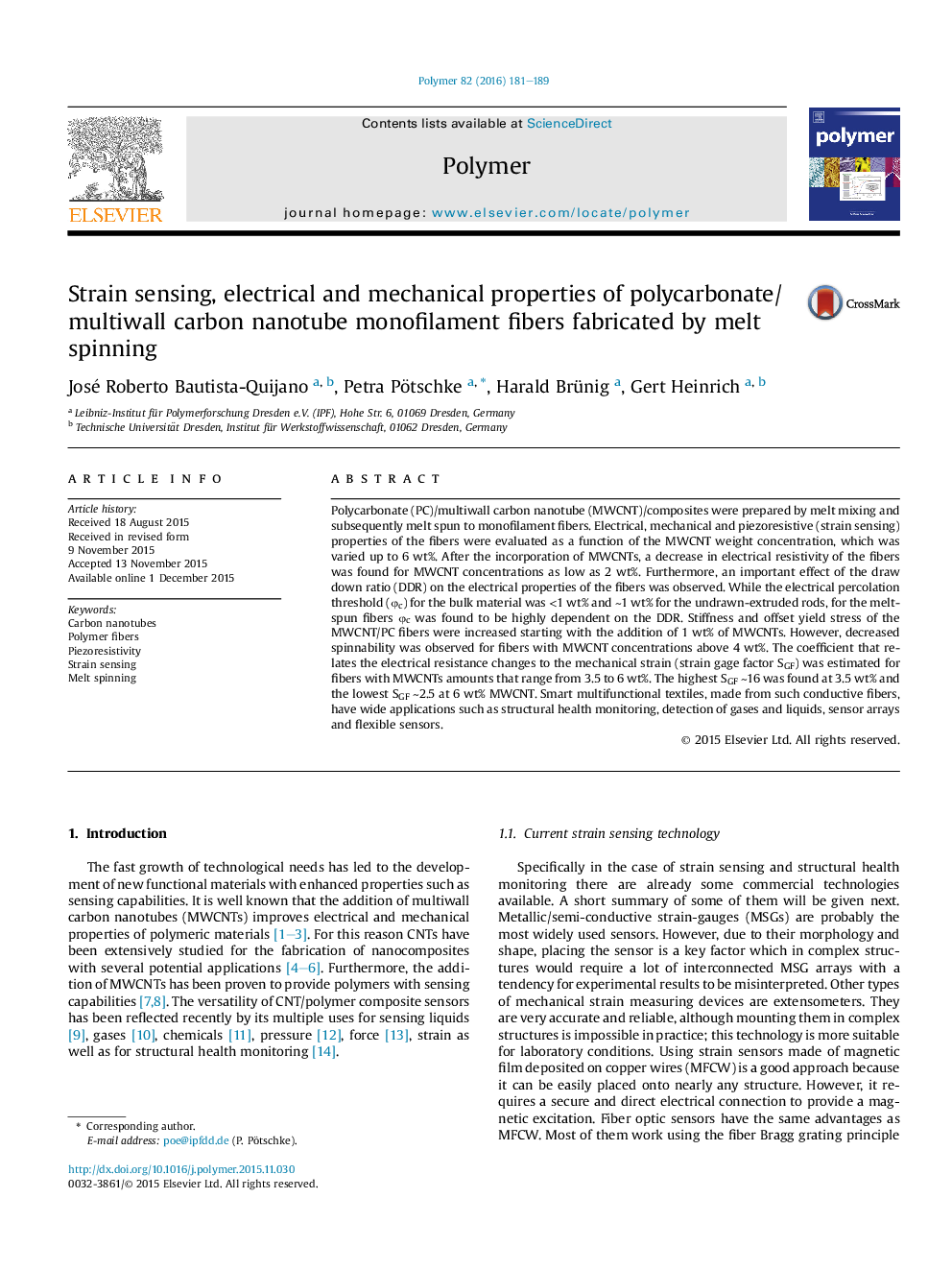| Article ID | Journal | Published Year | Pages | File Type |
|---|---|---|---|---|
| 5179425 | Polymer | 2016 | 9 Pages |
â¢Polycarbonate/CNT fibers were successfully melt-spun.â¢Mechanical, electrical and piezoresistive properties were evaluated on the fibers.â¢Enhanced mechanical and electrical properties were achieved starting at 1 wt% CNT.â¢Increasing draw down ratio & lowering CNT wt% enhances the strain sensitivity.â¢Gage factors (strain sensitivity) as high as 16 were obtained from the fibers.
Polycarbonate (PC)/multiwall carbon nanotube (MWCNT)/composites were prepared by melt mixing and subsequently melt spun to monofilament fibers. Electrical, mechanical and piezoresistive (strain sensing) properties of the fibers were evaluated as a function of the MWCNT weight concentration, which was varied up to 6Â wt%. After the incorporation of MWCNTs, a decrease in electrical resistivity of the fibers was found for MWCNT concentrations as low as 2Â wt%. Furthermore, an important effect of the draw down ratio (DDR) on the electrical properties of the fibers was observed. While the electrical percolation threshold (Ïc) for the bulk material was <1Â wt% and â¼1Â wt% for the undrawn-extruded rods, for the melt-spun fibers Ïc was found to be highly dependent on the DDR. Stiffness and offset yield stress of the MWCNT/PC fibers were increased starting with the addition of 1 wt% of MWCNTs. However, decreased spinnability was observed for fibers with MWCNT concentrations above 4 wt%. The coefficient that relates the electrical resistance changes to the mechanical strain (strain gage factor SGF) was estimated for fibers with MWCNTs amounts that range from 3.5 to 6Â wt%. The highest SGF â¼16 was found at 3.5Â wt% and the lowest SGF â¼2.5 at 6Â wt% MWCNT. Smart multifunctional textiles, made from such conductive fibers, have wide applications such as structural health monitoring, detection of gases and liquids, sensor arrays and flexible sensors.
Graphical abstractDownload high-res image (165KB)Download full-size image
